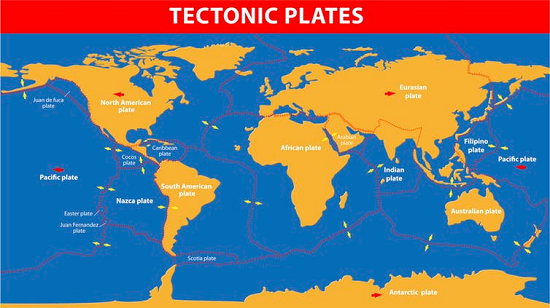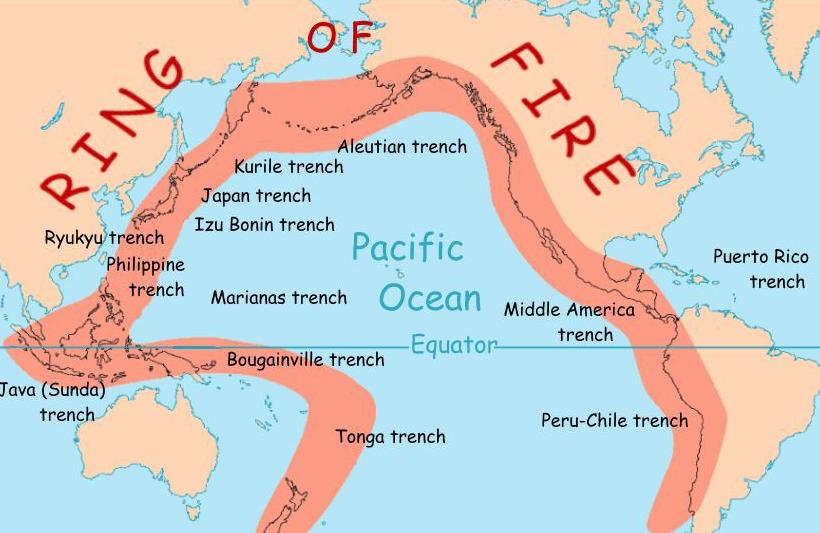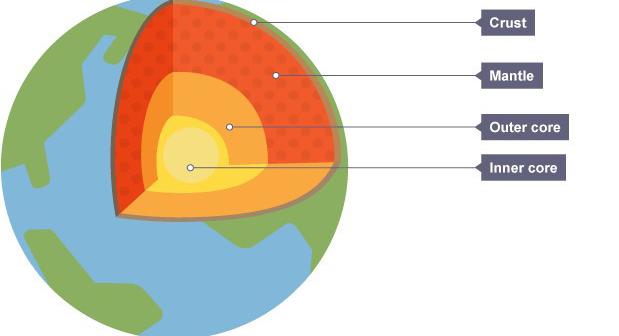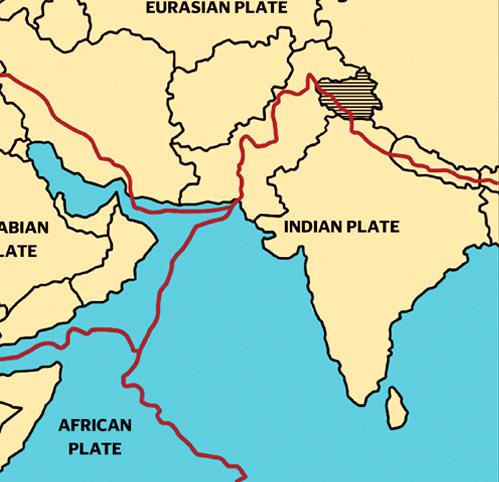Updated By: LatestGKGS Desk
Movements of the Tectonic Plates And Damaging effects of Earthquakes

Movements of the Tectonic Plates, The lithosphere, And Damaging effects of Earthquakes
The lithosphere is believed to consist of about 12 plates which float over the molten magma in the mantle. Most Earthquakes occur at the boundaries where the plates meet. These boundaries are the locations of considerable geological activities. For example:
The molten mass (magma) rises up at these points, pushing the two plates apart, this release of energy causes Earthquakes.
The two plates might slide past one another. This causes sudden changes in the lithosphere generating Earthquakes at shallow depths.
When one of the plates over-rides or subducts another, pushing it downwards into the mantle where it melts.
The surfaces where the plates slip is weak points and are called faults or fault planes. The location below the Earth’s surface where the Earthquake starts is called the hypocenter and the location directly above it on the Earth’s surface is called the epicenter.
Most faults occur along the boundaries of plates and these are the zones where Earthquakes are more likely to occur. These zones are called seismic zones.
Damaging effects of Earthquakes
The destructive (or damaging) effect of an Earthquake depends upon the following factors:
The magnitude of the Earthquake
Local geological conditions
Focal depth
Distance from the epicenter
Design of buildings and other structures
The density of constructions and population in the affected area.


